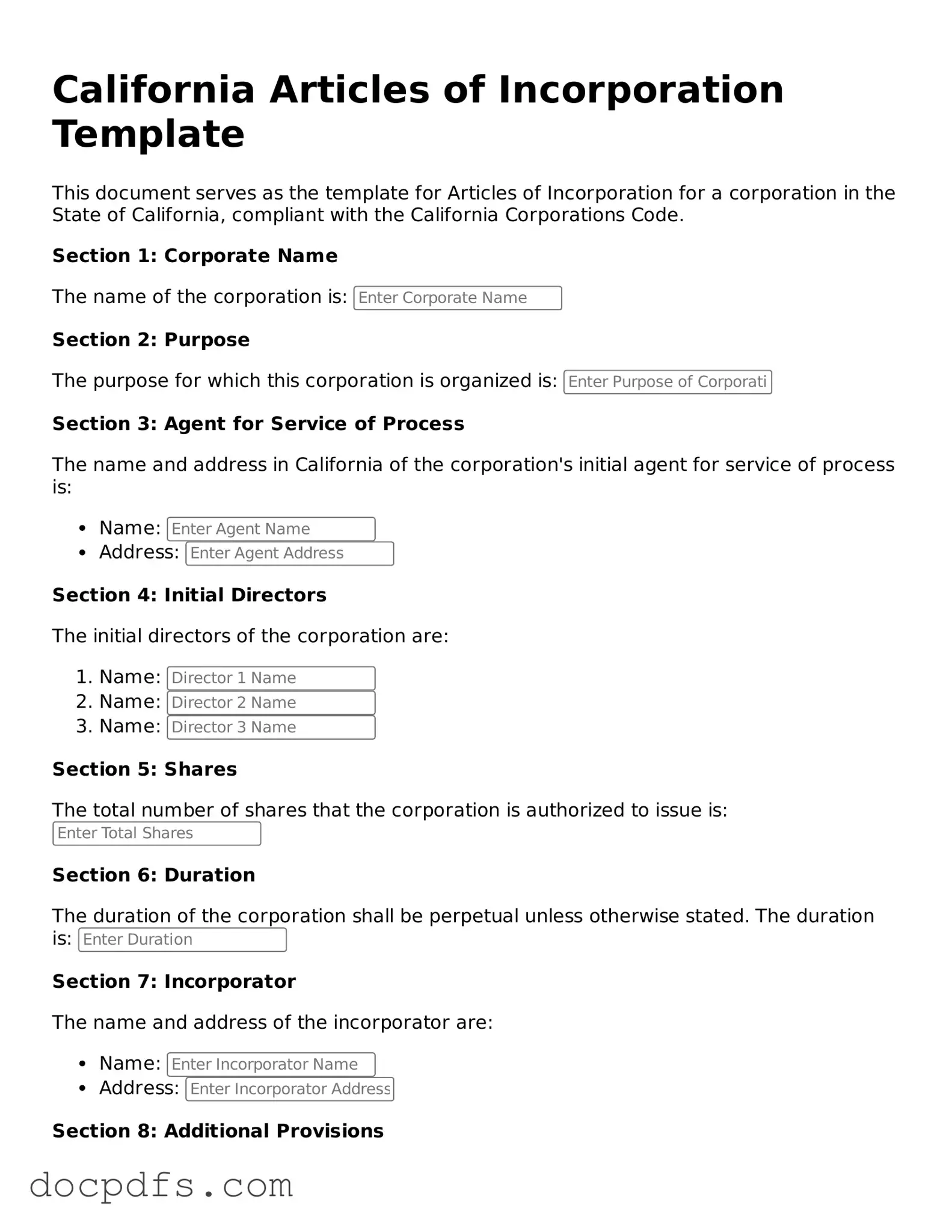In the dynamic landscape of business formation, the California Articles of Incorporation form serves as a critical foundational document for anyone looking to establish a corporation in the Golden State. This form is not merely a bureaucratic hurdle; it encapsulates essential information that defines the corporation's identity and operational framework. Key components include the corporation's name, which must be unique and compliant with state regulations, as well as the purpose of the business, which outlines its intended activities. Furthermore, the form requires details about the corporation's initial address and the name and address of the registered agent, who will serve as the point of contact for legal and official correspondence. Another vital aspect is the structure of the corporation, including the number of shares the corporation is authorized to issue, which directly impacts ownership and investment opportunities. Completing this form accurately is crucial, as it not only paves the way for legal recognition but also sets the stage for future growth and compliance. Understanding these elements is essential for entrepreneurs aiming to navigate the complexities of corporate formation effectively.
